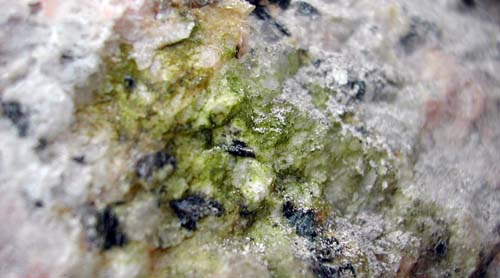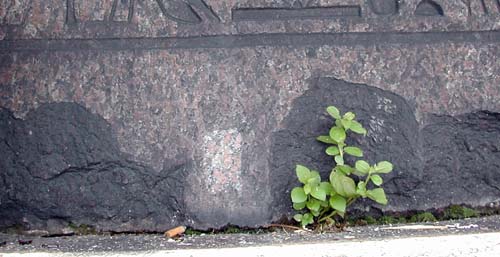Sphinxes from ancient Thebes.
Biological factors of the monument “SPHINXES” destruction

The granite of “Sphinxes” has appeared a place of various biological objects concentration. Their congestions are appreciable in the different parts of the monument.
1. Superficial biofilms in zones of the increased humidifying formed by green alga. The active development of these microorganisms is observed after rains. The growth of biofilms results in accumulation of organic substance on a surface of a stone, that promotes development others members of community (fungi and bacteria).
2. Moss and seed plants developing in large cracks located between separate parts of a monument. The plentiful development of moss is observed in a crack between a figure of a sphinx and derrick table on all perimeter of a monument.
3. Biofilms cover the bottom of stone elements which lost as a result of destruction processes.
4. The active development of microbial community is marked on sites of former restorations.
The biological researches have shown that the superficial damages of the monument are connected with development of microscopic fungi, bacteria and alga. Frequency of micromycetes in the samples of damaged granite surface was near 75 %. It have revealed fungi from 10 genera: Penicillium, Mucor, Alternaria, Cladosporium, Ulocladium, Aureobasidium, Phoma, Trichoderma, Fusarium, Scytalidium. They have a wide distribution in urban environment and are capable to cause damages of various materials including a stone. Chemoorganotrophic and chemolithoautotrophic bacteria were obtained in the samples of black film from the monument surface.

The black film (patina) on the rock surface is characterized by various density and color tints on the different parts of the sphinxes. This patina is formed as result of connected physical, chemical and biological processes. The microbial community development promotes to accumulation of superficial organic substance and changing of superficial properties of granite. Besides biofilms associate with atmospheric pollution and contribute the organic-mineral complexes formation. The more aggressive biodeterioration processes are located mainly in the deepenings, fissures and structural cavities of the granite surface, where the moisture and nutritious substances for microbial growth are concentrated.
Maps of the dengers.



